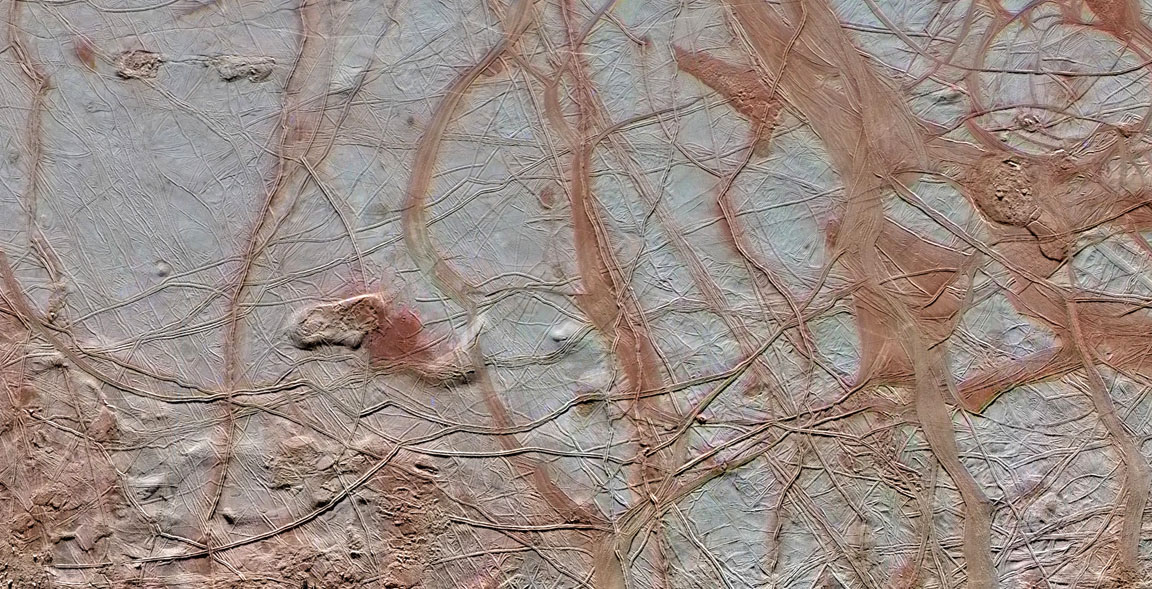The mysterious world Europa, the ice-covered second moon of Jupiter, sports deep scars that cut across its face. An international team of investigators studied high-resolution maps of that surface to reveal a pattern: something shook Europa sometime within the past few million years, causing the entire shell to shift by 70 degrees.
Europa has long captivated astronomers and the general public alike. From the surface, it looks like just another ho-hum frozen moon of the outer solar system, albeit one criss-crossed with deep fissures and strange reddish hues.
But the frozen surface, made of almost entirely water ice, hides something surprising, especially given its location in the solar system: a globe-spanning ocean, containing more liquid water than all the oceans of Earth combined.
This ocean, which could be up to a hundred miles deep, is kept liquid from the heat of the interior of Europa. That heat itself is generated from constant gravitational tugging as the moon orbits around Jupiter. As long as the orbit continues, Europa’s oceans will stay warm.
But that much water means that the icy shell is disconnected from the rest of the moon, allowing it to spin freely, ignorant of what’s happening underneath that giant ocean.
Because the surface is able to shift around so much, it can bunch up and collide with itself, much like the tectonic plates on Earth do, causing the massive fissures. These fissures – along with the rest of the surface – have been mapped in detail by the Voyager and Galileo missions, providing a resolution of 200 meters per pixel. Not much, but it’ll do.
A team of researchers studied those global maps and found that many fissures associated with shifts in the icy shell – a phenomenon known as true polar wander – appear all over the globe, indicating that the entire crust has shifted.
Dramatically.
It appears, based on the new research, that the icy shell of Europa shifted by 70 degrees from the spin axis of the moon, sometime within the past few million years.
The new research shows just how dramatically that little world can alter its face, and how critical it is to understand the relationship between the surface and its liquid water oceans.

